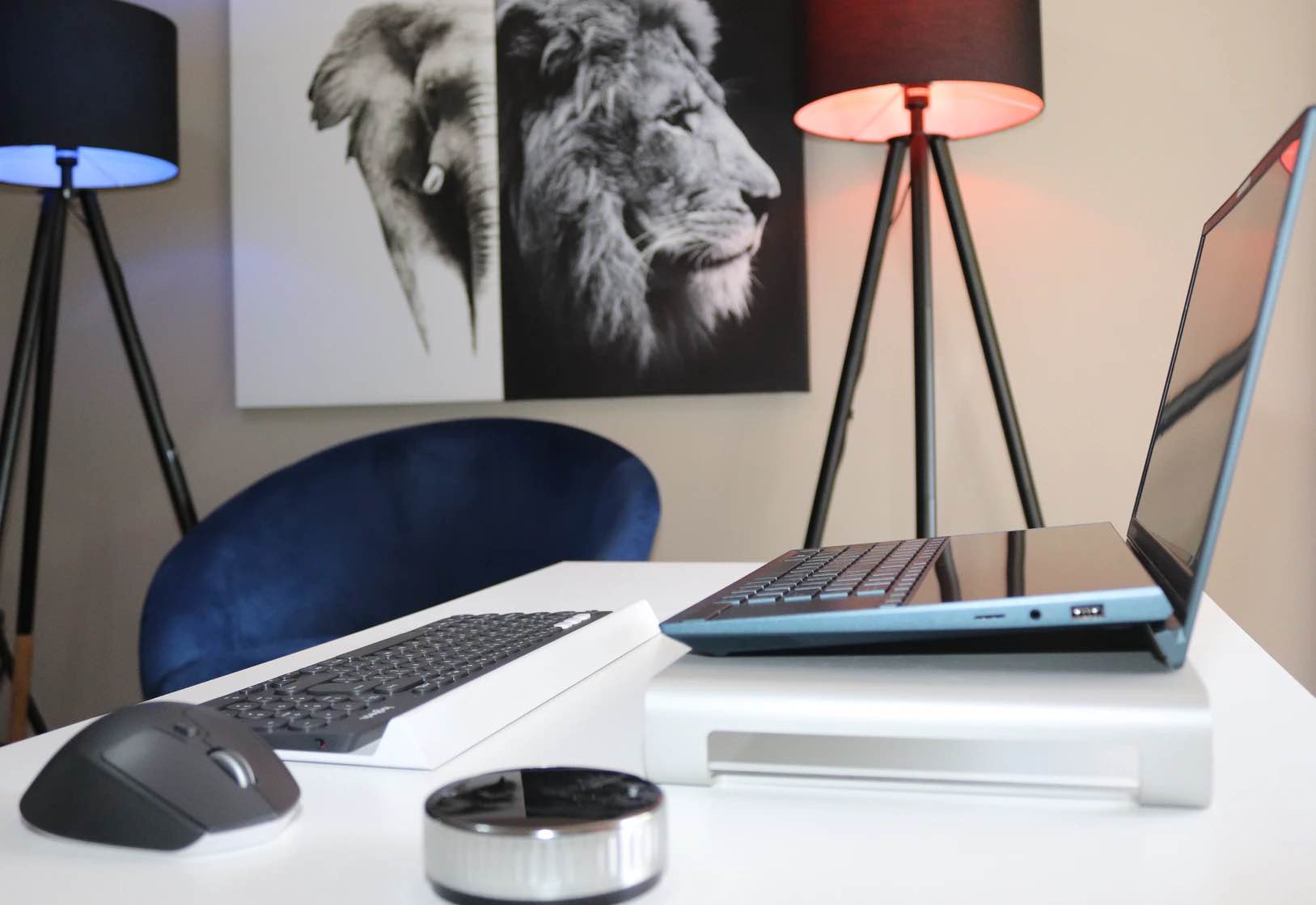There are no hard and fast rules when it comes to working from home, but your schedule could be greatly affecting your productivity. Are you someone who prefers sticking to a fixed schedule? Or do you prefer spontaneity and just going with the flow every day?
In this article, NoHQ will be sharing with you some best practices and tips when it comes to structuring a remote working schedule that maximizes your work productivity and helps prevent burnout.
What to consider when planning your work from home schedule?
What time do you want or need to start working?
Do you have the tendency to sleep in? Then planning to start work at 6am daily is not a very realistic schedule. Pick a time that you can commit to. Does your work involve you to be available at certain times to accommodate multiple time zones? You’ll need to take these timings into consideration too.
Where are you operating from? How much flexibility are you granted? Depending on these factors, determining the time you start working is the first step in planning your work from home schedule.
What are your working hours and days?
Does your employment contract specifically state the hours you need to adhere to? Otherwise, take your working style into consideration. Are you someone who prefers to work productively for short hours or do you prefer taking your time to clear tasks with multiple breaks in between?
As long as you are able to accomplish your work obligations, and meet the expectations of your employer, you should not be restricted to a fixed schedule of when and how to work.
When will your meal times be?
Some people prefer to take shorter lunch breaks as they schedule multiple breaks throughout the day. Others prefer to work through lunch or take a longer lunch break to rest and relax. Planning a fixed lunch break with no variations from day-to-day would help you stick to your schedule much easier.
When are you going to stop working?
Picking an ideal time to stop work helps in reducing burnout. Losing track of time and being too immersed into work could lead to a buildup of stress, overwhelm and anxiety. It is important to draw a boundary between personal and professional life.
Take time off from work to rest, recharge and spend time on self-care before resuming work the next day.
What do you need to accomplish daily?
There may be specific tasks or quotas you need to reach daily. If it is difficult to establish the amount of time you need to accomplish them, you can set an initial goal and adjust the plan as you hustle through your day.
Tackle the more challenging or bigger tasks when you feel most productive. Leave the simpler tasks like administrative work when you feel your food coma incoming (less productive).
Do you have any other commitments you need to consider?
This includes fetching your kids, looking after elderly parents, cooking for the family, balancing multiple jobs, etc. If you know these tasks need to be done at a specific time, take them into consideration early.
Structuring Your Work From Home Schedule

Organize your workspace every morning.
A clean workspace rid of excess clutter can lead to better output and quality work. Excess clutter means there will be more items competing for your attention, driving lower levels of productivity.
A study conducted by HLW International LLP found that employee productivity levels were highly influenced by the cleanliness of their workplace. Being able to locate what you need at any time improves work efficiency.
Ensure that your workspace has all the equipment, tools, and documents you need to stay organized and productive throughout the day.
Ruthlessly prioritize
Start by listing out the tasks and meetings you have for the day. A good practice is to clear your task list starting from the most important tasks.
If you are still unclear of how to identify your higher-impact tasks, this article on prioritization by Zapier presents 9 techniques you can use to identify your most important work.
We would also recommend using the Pomodoro technique to complement your work from home schedule. This concept uses time tracking and blocking to help you plan and visualize your daily schedule. For more on the Pomodoro technique, check out our “countering work from home loneliness” article.
Create a morning ritual
Morning rituals help in giving you a sense of balance. Your routine starts you off and sets the tone for you to power through the rest of the day. These morning rituals are the same things you would do each morning before you head into the office. For example,
- Listening to the news while eating breakfast.
- Getting your coffee fix.
- Getting your morning workout in, walking your dog, etc.
Try to get some human interaction in
In remote work, communication is vital. Setting aside 10-15 minutes daily for some human interaction while working wouldn't hurt. This can be pinging your favorite coworker on Slack, having a virtual coffee break, checking in with a client, video calling a friend, checking in on social media, etc.
When you connect with others who are in a similar situation, you could possibly be exposed to productivity and knowledge spillover. This improves your morale and ultimately increases your work productivity.
Cook your lunch, take a walk, move around when you can during lunch break.
Cooking can be therapeutic and now that you are working from home, take advantage of this time to hone your home cooking skills! No longer are the days when you constantly need to eat out.
Take your lunch break as an opportunity to change the scenery, move your body, and get a breather. Get outside if you can to help you recharge and give your mental health a boost.
Back to work with short breaks scheduled in between.
If you don’t schedule your breaks, it is likely that it won’t happen. Throw in a handful of 5-15 minute breaks throughout the day. It is also good to schedule at least 1 slightly longer break to fit in some exercise.
This takes some trial and error to see what break times work for you. Look out for specific times of the day when you feel less productive and schedule a break there.
Get off work completely.
Once you’ve completed your end-of-day ritual, leave your work behind and focus on yourself. Get a good dinner, hang out with friends, etc. This ritual could include shutting down your computer, updating your status within your company intranet, checking off your to-do list, etc.
It’s great to have fun after-work activities to look forward to, but that might not always be the case. As such, an end-of-day ritual you look forward to could serve as motivation to keep you going throughout.
Tips For Planning Your Work From Home Schedule:

Identify your distractions
Recognize the things that could direct your attention away from your work. For example, scrolling through social media when you’re stressed, procrastinating on work, reaching for a snack frequently, etc. Once you know what your biggest distractions are, you can easily come up with a game plan to tackle those issues such as keeping your distractions out of sight.
Get dressed
Working in your pajamas is not new to working from home. However, this has a slight psychological effect on us that reduces our productivity for the day. By preparing yourself as if you’re heading into the office, it’ll convince and mentally prepare you for the workday ahead.
Work interruptions at home should not make you feel guilty
Working from home comes with its own set of problems and distractions. You may need to look after your children or parents as external care facilities are unavailable. You may be overwhelmed by the number of chores and tasks that you need to get done, which might eat into your working hours.
If these tasks piling up bothers you, you can schedule them ahead of time. For example, add them into your morning routine, or clear them during your scheduled breaks throughout the day.
Set time aside for yourself
Avoid burnout and unwanted stress by setting clear distinctions between when you are at work and when you are at home. If you are having trouble finding things to do to relax in your free time, here are some of our suggestions. If you have children and are looking for activities to collaborate on together, how about checking Scratch out? You can draw, program a game, and be as creative as you like.
Otherwise, it is a good opportunity for you to pick up some new skills and explore different hobbies that you never got the time to. For example, growing your own herbs, learning a new language, etc. A great place to start would be Skillshare or Udemy where they have tons of courses for you to look through.
Switch locations if you need
There is no such thing as the perfect home office set up. A physical change in your work environment could help to change your state of mind and improve productivity. You could choose to move to a co-working space, or bring out a laptop stand to temporarily work on the couch, etc.
Of course, we are not abandoning the home-office set up. You can always return whenever you feel like it.
Find your rhythm and structure your new work from your home schedule
Building a structured work-from-home schedule requires some trial and error before you can reap the most out of each work day. An office space generally provides focus, but with some adjustments and welcoming to change, you will get used to the new routine.
